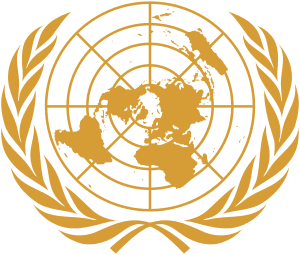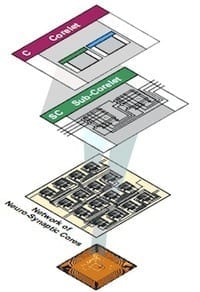
The office has the look and feel of an Internet start-up.
The workers are young, the dress is casual and the computer of choice is an Apple notebook. They inhabit a single open room. The walls have whiteboards for scribbling ideas when inspiration strikes.
But the office in Manhattan is not dedicated to the latest app. It is the base camp of the United Nations Global Pulse team — a tiny unit inside an institution known for its sprawling bureaucracy, not its entrepreneurial hustle. Still, the focus is on harnessing technology in new ways — using data from social networks, blogs, cellphones and online commerce to transform economic development and humanitarian aid in poorer nations.
“We work hard, play hard and tend to stay well-caffeinated,” said Robert Kirkpatrick, who leads the group. “This is an exercise in entrepreneurship.”
The efforts by Global Pulse and a growing collection of scientists at universities, companies and nonprofit groups have been given the label “Big Data for development.” It is a field of great opportunity and challenge. The goal, the scientists involved agree, is to bring real-time monitoring and prediction to development and aid programs. Projects and policies, they say, can move faster, adapt to changing circumstances and be more effective, helping to lift more communities out of poverty and even save lives.
Research by Global Pulse and other groups, for example, has found that analyzing Twitter messages can give an early warning of a spike in unemployment, price rises and disease. Such “digital smoke signals of distress,” Mr. Kirkpatrick said, usually come months before official statistics — and in many developing countries today, there are no reliable statistics.
Finding the signals requires data, though, and much of the most valuable data is held by private companies, especially mobile phone operators, whose networks carry text messages, digital-cash transactions and location data. So persuading telecommunications operators, and the governments that regulate and sometimes own them, to release some of the data is a top task for the group. To analyze the data, the groups apply tools now most widely used for pinpointing customers with online advertising.
“We’re trying to track unemployment and disease as if it were a brand,” Mr. Kirkpatrick said.
The Latest Bing News on:
Tracking International Development
- City of Waco announces first Chief Economic Development Officeron May 8, 2024 at 11:06 am
WACO, Texas — On Wednesday, the City of Waco announced they had appointed Danny Chavez as the city’s first chief Economic Development Officer.
- F1 24 Authenticity, Track and Driver Improvements Revealedon May 7, 2024 at 4:33 pm
In F1 24, players can expect an elevated level of realism thanks to several exciting enhancements. Firstly, the game introduces new in-race driver audio directly sourced from real-world F1 broadcasts, ...
- A new sea route for Gaza aid is on track, USAID sayson May 3, 2024 at 6:15 pm
Preparations are on track in Gaza for humanitarian workers to be ready to deliver food, treatment for children and other assistance by mid-May, a USAID official said.
- A new sea route for Gaza aid is on track, USAID says. Treating starving children is a priorityon May 3, 2024 at 11:33 am
The U.S. expects to have arrangements in Gaza ready for humanitarian workers to start delivering aid this month via a new U.S.-backed sea route.
- Youngkin on track to complete handful of trade missionson April 30, 2024 at 9:00 am
Glenn Youngkin is currently on his third trade mission. The governor is in the midst of an overseas trip to Western Europe, visiting Germany, Denmark, Finland and Switzerland in his third ...
- Millennium wins ‘FOO Fighter’ contract for SDA missile trackingon April 30, 2024 at 4:33 am
(Millennium Space Systems) The Space Development Agency selected Millennium Space Systems to build eight satellites carrying advanced missile tracking sensors, part of an experiment aimed at improving ...
- Watch Olympic Development Events On Final Day Of Penn Relays 2024on April 27, 2024 at 4:25 am
Olympic Developement takes up a big portion of the final day of events at Penn Relays 2024. Teams from across the world will be looking to make their mark as they look towards the Olympic ...
- How to Use monday.com to Track Employee Training and Developmenton April 21, 2024 at 5:00 pm
Set timelines for development and provide the resources to improve skills. Create measurable steps and continue to track the employee’s progress. Incorporate feedback you received from the ...
- From track spikes to bikes - Inside Jamaica's first-ever UCI cycling road raceon April 15, 2024 at 5:00 pm
Simmonds hope is that the Jamaica International Cycling Classic will be a catalyst for the development of the sport ... young people to cycling instead of Track and Field.
- Space Development Agency satellites poised to track first missile teston April 11, 2024 at 5:00 pm
designed to track and target hypersonic weapons from space. (L3Harris Technologies) COLORADO SPRINGS, Colo. —The U.S. Space Development Agency expects its constellation of missile detection satellites ...
The Latest Google Headlines on:
Tracking International Development
[google_news title=”” keyword=”Tracking International Development” num_posts=”10″ blurb_length=”0″ show_thumb=”left”]
The Latest Bing News on:
Tracking International Development Using Big Data
- BIG partners with software development company SoftwareOneon May 8, 2024 at 4:31 am
German esports organisation Berlin International Gaming (BIG) has announced a partnership with business software development company SoftwareOne. According to a release, the two companies will work ...
- AI and Big Data Take the Centre Stage in Central Asia at Beetech 2024 Hosted by Beeline Kazakhstan and QazCodeon May 6, 2024 at 3:43 am
Kazakh and international delegates participate in the annual conference, discussing artificial intelligence, big data analytics and app ...
- Daily Presidential Tracking Pollon May 5, 2024 at 5:00 pm
To get a sense of longer-term job approval trends for the president, Rasmussen Reports compiles our tracking data on a full month-by-month basis. Rasmussen Reports has been a pioneer in the use ...
- How to know if your car is tracking you, risking higher insuranceon May 5, 2024 at 9:01 am
Automakers use telematics programs to track and share drivers’ behavior on the road — sometimes without their knowledge.
- Leveraging Big Data for Enhanced Cybersecurity Solutionson May 3, 2024 at 4:01 am
In this contributed article, Alexander Norell of VikingCloud explores how big data analytics can significantly improve cybersecurity strategies by enabling more accurate threat detection and real-time ...
- These are the best apps for tracking your credit card, airline and hotel rewardson May 2, 2024 at 2:54 pm
There are dozens of large loyalty programs out there, from credit card rewards, to airline miles and hotel points, there's a lot to keep track of ... keeps your data secure by using industry ...
- Intapp acquires Transform Data Internationalon May 2, 2024 at 6:13 am
Transform Data International is a longtime Intapp partner that builds and implements enterprise collaboration technology. The company has developed its own portfolio of software add-ons for Intapp ...
- What Is Social Listening And How To Get Startedon May 1, 2024 at 5:00 pm
Social listening is the practice of tracking conversations ... Gathering this data and then examining it can help you in a number of ways, from uncovering useful product development insights ...
- Elliptic Unveils AI Model to Trace Bitcoin Money Launderingon May 1, 2024 at 8:33 am
Elliptic teams up with MIT and IBM to unveil AI for tracing Bitcoin laundering, backed by a massive dataset of 200M transactions.
- Big Data Career Notes: April 2024 Editionon April 30, 2024 at 9:29 am
In this monthly feature, we’ll keep you up-to-date on the latest career developments for individuals in the big data community. Whether it’s a promotion, ...
The Latest Google Headlines on:
Tracking International Development Using Big Data
[google_news title=”” keyword=”Tracking International Development Using Big Data” num_posts=”10″ blurb_length=”0″ show_thumb=”left”]









